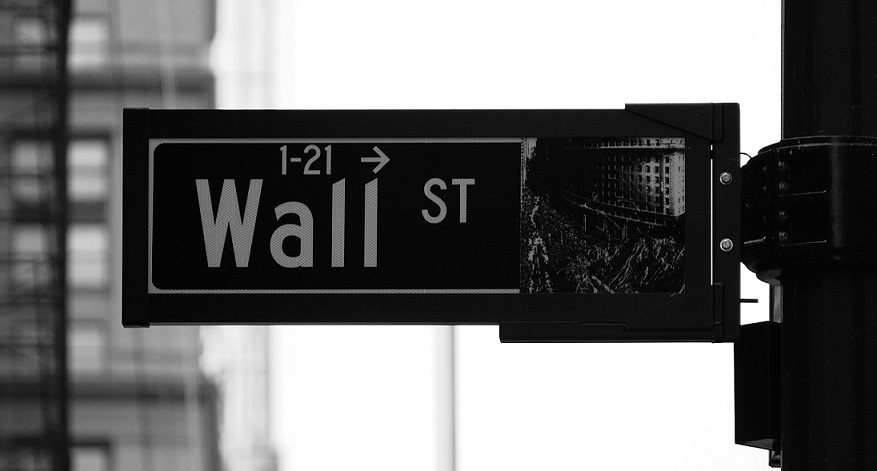
Tradable instruments:
ETF:
ProShares S&P 500 Dividend Aristocrats ETF – (AMEX:NOBL)
The ProShares S&P 500 Dividend Aristocrats ETF tracks an equal-weighted index of 50 S&P 500 constituents that have increased dividend payments annually for at least 25 years.
*NOBL was incepted in 2013
In our recent report on the S&P 500, we believe the current economic expansionary cycle is in its late stage. Multiple indicators have yet to indicate an imminent correction, hence we believe that while investors can continue to be invested in equity markets, more caution is advised going forward.
Additionally, with several factors like the escalating tensions in North Korea and their successful nuclear tests and the coming debt-ceiling deadline, it would prudent for investors to start taking more defensive posture as valuations scale higher and to hedge their positions against any significant market correction.
For investors that want equity exposure that provides income and lower volatility, we believe that the ProShares S&P 500 Dividend Aristocrats ETF (NOBL) might prove useful as a defensive component in their portfolios.
Investment Action
NOBL tracks a list of constituents that have increased their dividend payouts for 25 consecutive years or more. In the last two major market crises, 1) NOBL fell significantly less than the S&P 500 index; 2) recovered faster than the S&P index and 3) continued paying out ever increasing dividends, which allowed investors to weather through crisis periods. As such we believe that NOBL would perform well as a defensive tool for investors.
Figure 1: Performance during Crises periods
Source: PSR, Bloomberg
Limited Downside during crises
As can be seen in Figure 1, during the past two major crises, the Dot-com bubble and the Global Financial Crisis (GFC), NOBL (or SPDAUD in the chart) had significantly less downside than the SPX index. During the GFC, the NOBL fell by almost 7% points less than the S&P 500 index, 49.65% vs 56.78%.
The defensive nature of NOBL was even more pronounced during the Dot-com bubble. When the index fell almost 50%, NOBL fell by barely 1%. This was due to a dearth in Technology stocks in the NOBL list. This crisis might be a closer analogy to our current time period than the GFC, seeing as the NASDAQ has been running hot in recent years.
For investors looking to be even more defensive, we have constructed a sample portfolio chosen from the more defensive sectors within the NOBL: Healthcare, Consumer Staples and Discretionary and Energy.
Figure 2: Performance of Phillip Ultra-Defensive Aristocrats during recent crises
Source: PSR, Bloomberg
Figure 3: Phillip Ultra-Defensive Aristocrats for even lower volatility
As can be seen, during the Dot-com bubble, our modified defensive portfolio barely fell, outperforming even the NOBL. The defensive portfolio also significantly outperformed during the GFC, falling more than 24% less than the index.
Faster recovery on the upside
Next, not only did the NOBL show less downside during the previous two crises, they also registered a faster recovery post crisis. When comparing the annual returns for the 4 years following bottom of each crisis, we can see that on average, the NOBL outperformed the index.
Figure 4: Comparative Returns (Post Dot-Com)
Figure 5: Comparative Total Returns (Post Dot-Com)
Figure 6: Comparative Returns (Post GFC)
Figure 7. Comparative Total Returns (Post GFC)
Source: PSR, Bloomberg
In Figure 4, we see that in the 4 years post Dot-com bubble, the NOBL beat the index in 2 of those years. When dividends for both NOBL and S&P 500 were included in Figure 5 for Total Return, the amount that the Aristocrats beat the index is greater and the underperformance in years they did not beat was lessened. When taking into account NOBL barely fell (<1%) during the crash, its relative performance is even more impressive.
In the 4 years post-GFC, we see that the NOBL outperformed the index in 3 of those years. When dividends were taken into account in Figure 7, we can see that the NOBL beat the index for all 4 years post-GFC. Given that the criteria for inclusion in the NOBL list is increasing dividend payments for 25 consecutive years, it is not surprising that when dividends are included for both NOBL and S&P 500 index, the difference in returns is widened further.
Continuously growing dividends
Lastly, the NOBL, with its focus on dividends, gives investors holding power to weather downturns in the market. With the criteria of increasing dividends every consecutive year for 25 years, at a minimum, the stocks in the Aristocrat list have been growing their dividends every single year since 1992.
Since 1992 to today, the constituents that NOBL tracks have not only paid out a dividend through the Asian Financial crisis (1997), the Dot-Com bubble (2000), the September 11 attack (2001), the Global Financial Crisis (2007-2008) and the European sovereign debt crisis (2010), but they have all increased their dividends every single year as well.
Figure 8: Financial crisis timeline
Source: Sidecar Capital
Figure 9: 5 yr Div CAGR & Div Growth History
* AbbVie Inc was spun off from Abbott Laboratories in 2013, its 3yr Div growth rate is 12.50%
From Figure 9, the average 5 year dividend CAGR of the constituents tracked by NOBL is about 9.77%. As the ETF equal weights the constituents of the Dividend Aristocrats, the average 5 year dividend CAGR was taken to get an idea of the dividend growth rate investors might possibly expect from investing in the NOBL.
For our Phillip Ultra-Defensive portfolio, the average 5 year dividend CAGR came up to 9.11%, however, that includes a 0% from ABBV, which was spun off from Abbott Laboratories in 2013. Its 3 year dividend CAGR was 12.50%, hence the expected dividend growth rate for the portfolio should be higher than the 9.11% and likely higher than the 9.77% average of the entire Aristocrats list.
Additionally, while the minimum requirement of the NOBL is 25 years consecutive dividend increases, the shortest dividend growth streak for the components of the defensive portfolio comes up to 31 years, with the longest being 60 years. Of course, there are no guarantees that the constituents will be able to sustain their dividend growth streaks and investors should still be aware of risk going forward. However, given that the constituents of NOBL, and by extension the portfolio, have been able to not only pay out a dividend through multiple financial crises but also continue to increase that dividend through those crises, we are fairly certain that they would be able to maintain their dividend growth streaks. As such, we believe that with the growing dividends, investors will be able to better weather downturns in the market as they are paid while waiting for recovery to come.
Conclusion: As current market conditions have yet to signal an imminent correction, investors might wish to remain invested in the equity market and yet be defensive given current market valuations and with several uncertainties in geo-political landscape. Hence, we believe that investors might benefit from shifting their assets to the ProShares S&P 500 Dividend Aristocrats ETF (AMEX:NOBL). Due to its 1) limited downside during the past two major crises, 2) faster recovery than the index in first few years following the crises and 3) continually increasing dividends that allow investors to weather through crisis periods, we believe that this would help perform a defensive function in investors’ portfolios.

Ho Kang Wei graduated with a Bachelor of Commerce, majoring in Accounting and Finance, from Monash University.
He started analysing and investing in US equity markets since 2008. Joining Phillip Securities Research in 2015, he is the analyst in charge of US markets.